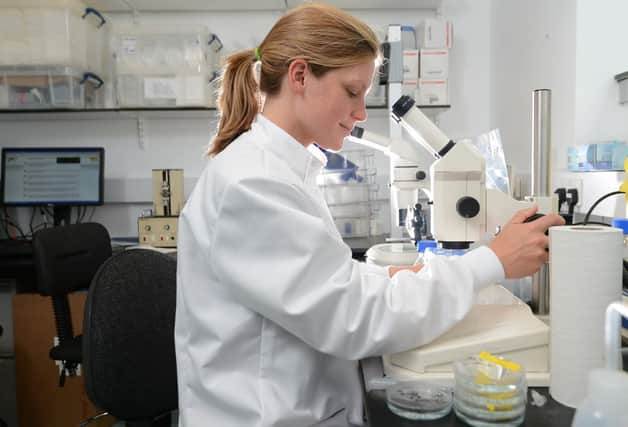Research uncovers hope for blood cancer patients


A team at Edinburgh University studied cells from the embryos of mice to find the earliest stage in the development of blood stem cells identified by scientists so far.
They now hope to use this knowledge so that in future they can take human stem cells – the embryonic cells which are the building blocks of the body – to create blood cells which can be used in treatments for diseases like leukaemia and lymphoma.
Advertisement
Hide AdAdvertisement
Hide AdIt is possible that this could lead to cells from patients with such conditions being used to generate blood cells, which are transplanted back into them to treat their cancer.
Writing in the journal Stem Cell Reports, the team set out to find the precursor cells to haematopoietic stem cells – also known as blood stem cells – from the embryos of mice.
These precursors are the stage before the blood cells become fully functioning.
The researchers, who received funding from charity Leukaemia and Lymphoma Research, were able to trace the blood cells back to a much earlier point than has previously been possible, identifying them in a nine-day-old mouse embryo.
After observing their development in the embryo, the researchers were able to recreate the same process in the lab by culturing the precursor cells into fully functioning blood stem cells.
Professor Alexander Medvinsky said the aim of their work had been to identify the cells as early as possible so they could observe what happened on their journey to becoming fully functioning.
Medvinsky said there was still some way to go to understand the process fully, but he believed they had made a significant step along this path.
“Learning from the mouse, we will learn how to do things in the human,” he said.
Advertisement
Hide AdAdvertisement
Hide Ad“We still need to move further backwards towards the very beginning, so we can find parallels between the mouse and the human.”
Another research team also based in Edinburgh is currently working on using stem cells to produce blood which could be used in transfusions.
Medvinsky said while the other researchers were focussing on creating red blood cells which would be useful in situations where a patient had significant blood loss, their work was hoping to create blood which would be used in patients needing stem cell transplants due to suffering blood cancers such as leukaemia and lymphoma.
“In a patient with leukaemia you are looking to replace the damaged cells with normal cells and that’s why bone marrow transplantations are in human use. They contain blood stem cells,” he said.